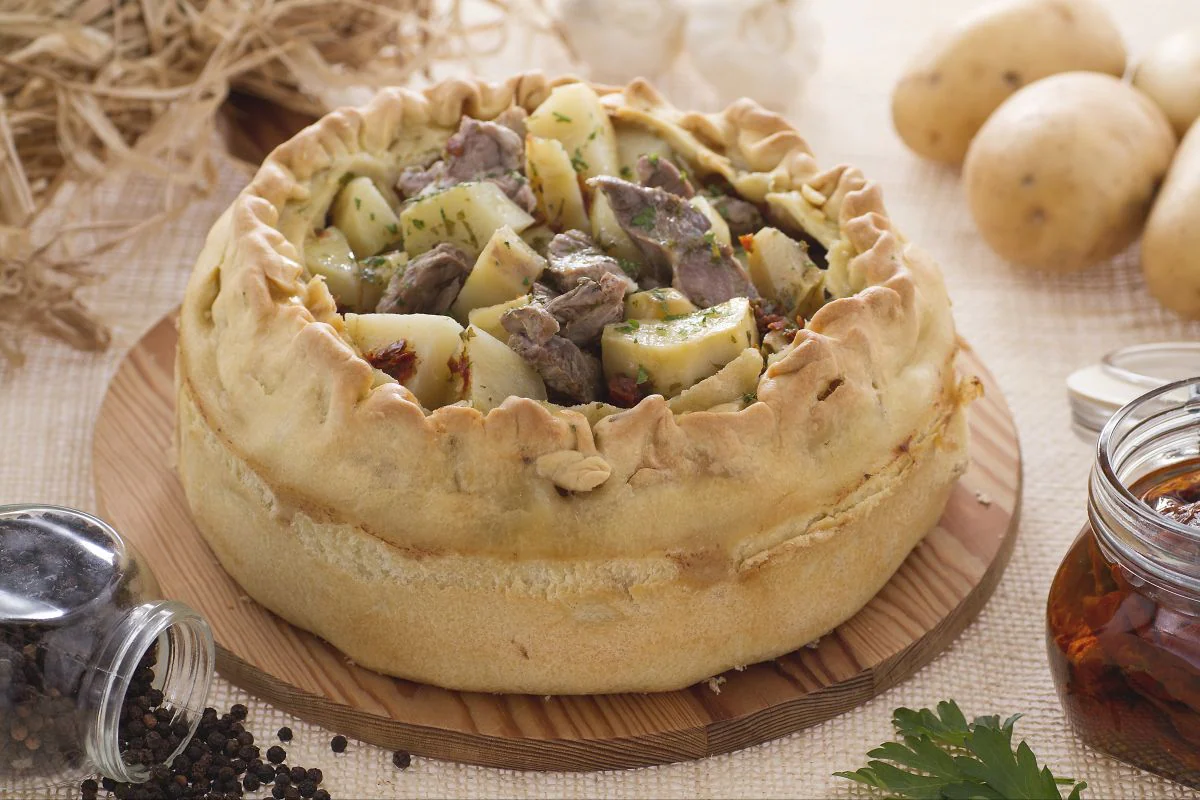Panadas
- Average
- 1 h 25 min

So here's the thing: the panada recipe is like this really amazing classic from Sardinia. I mean, it captures the island's rich culinary traditions, no question. The name "panada" means "ball" in Sardinian, and look, it's just perfect for describing the dough's smooth, round shape—really, really holds all those delicious fillings.
This Sardinian panada bread is usually packed with lamb, potatoes, and sun-dried tomatoes, creating this tender and flavorful filling inside a crispy crust. And sometimes, people switch it up and use pork or eel. It's a cool nod to the fishermen of the coast. Some might skip the potatoes and add peas instead, or maybe go vegetarian with fresh fava beans and olive oil instead of lard. This versatility? Keeps the dish a favorite at big Sunday lunches and local festivals, for sure.
Each family adds their own twist to the panada filling, depending on what's fresh or who’s visiting. Breaking apart the golden crust by hand? It’s a cherished tradition in Sardinian homes—everyone grabbing a piece to enjoy the savory mix of meat and veggies. The contrast of the crispy outside and tender inside is, like, the best of both worlds. Pretty much.
Though it's often compared to other stuffed breads in Italy, panada stands out with its unique charm. Plus, you won't find it served with a panada sauce like some savory pies, because all the flavor is baked right in. If you're adventurous, try versions with eel or fava beans—they’re a nice nod to Sardinia’s fishing villages and farming families. Whether you stick with tradition or experiment with seasonal ingredients, this panada recipe is super satisfying and authentically Sardinian from start to finish. It's a dish that really brings people together, showing the island's culinary richness and the joy of sharing food with family and friends.

Start by preparing the panada dough: dissolve the salt in lukewarm water 1, add the lard 2 (or the same amount of extra virgin olive oil) to the semolina flour, start kneading by adding the lukewarm water little by little 3.

Knead vigorously by hand 4 until you gather all the ingredients (or use a stand mixer with a hook), then transfer the dough to a work surface and knead it vigorously, pulling the dough with your hands 5 until there are no more "wrinkles"; you should get a fairly firm and smooth dough, it will take about 15 minutes. In the end, it should be well compact but not too dry otherwise you won’t be able to roll it out and work it 6.

Cover it well with plastic wrap 7 and let it rest for about half an hour in a cool place (but not in the refrigerator). Meanwhile, cut the lamb into small pieces 8, peel the potatoes and cut them into chunks 9 not too small.

Chop the garlic, parsley 10, and sun-dried tomatoes 11. Take the dough ball and divide it into two parts 12, the proportions should be about 1/3 for the cover (the lid) and 2/3 for the base that will contain the filling.

Take the larger dough ball, keep the other aside covered with plastic wrap so it doesn't dry out, and roll it out until you get a sheet about 0.4 inches thick 13, giving it a round shape as regular as possible that exceeds the diameter of the baking pan by at least 4 inches. Take a baking pan with a diameter of 10 inches with low edges and lay the sheet on top 14, make it adhere well to the walls and start filling it. If you prefer, you can use a pan with high edges (3-4 inches) in this way it will be easier to obtain a panada with regular edges. Place some of the chopped parsley, garlic, and sun-dried tomatoes at the bottom, a drizzle of oil 15,

cover with half of the potatoes 16 and half of the lamb pieces, salt and pepper, add another part of parsley, sun-dried tomatoes, garlic, salt, and pepper 17. Then make another layer with the remaining potatoes and lamb, finish with the parsley, sun-dried tomatoes, and garlic, salt, pepper 18, and if you prefer, drizzle with some more oil.

Create folds by overlapping the excess dough edges along the entire circumference (19-20). Cover with a damp cloth, so the dough doesn't dry out, and set aside. Meanwhile, roll out the smaller dough ball into a round sheet 21 with a diameter of 8 inches and about 0.2 inches thick (which will be the lid for the panada).

Place the round sheet in the center of the panada 22 and carefully seal the edges with your fingers, pinching the dough. Once you have closed the dough well, you can decorate it with the typical cord formed by pinching the dough between your thumb and index finger 23. Continue this way around the entire circumference. Bake in a preheated static oven at 392°F for 30 minutes and then at 356°F for about 1 hour. The panada will be ready 34 when you shake it and hear the juice released from the meat moving inside. Remove it from the oven, let it cool slightly, and take it out of the pan. Cut the top part and serve the panada hot!